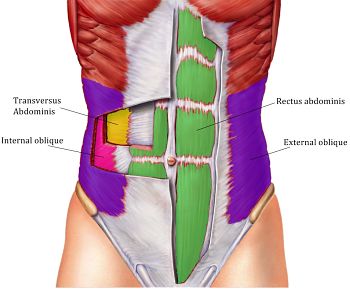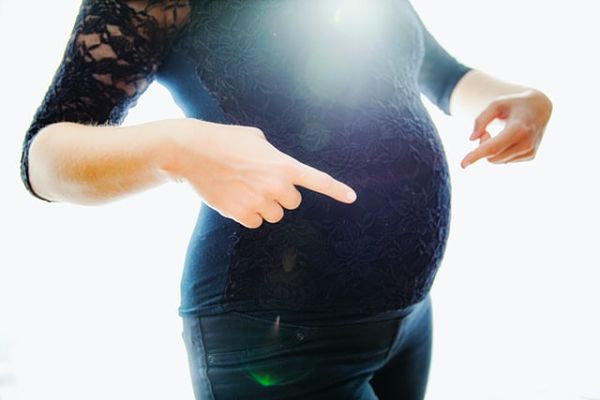I gave birth to two beautiful children and I had the post-partum belly to prove it. With each pregnancy, my body changed and my belly grew. After each pregnancy, I struggled a bit to get my body back to normal, if there is such a thing as “normal”.
Dealing with Post-Partum Belly
What mom has the time to care what she looks like? Most of them are too busy running around and raising their kids. There comes a time when it can start to wear on them though. Feeling tired and out of sorts, I know that I wanted to feel more like myself again.
Months after my second pregnancy, I set out to get in shape. Not because I wanted to be thin or look like a model. I never wanted to fall in line with those unrealistic photoshopped stereotypes. All I wanted was to feel fit and healthy.
It started off with an “ab challenge”. After a month of planks and sit-ups with healthy eating (all added sugar got the heave-ho, i.e., I was miserable), I saw no noticeable changes in my body. I had hoped to see at least some improvements in my muffin top. To make sure I had proper form, I checked out my plank in front of a mirror. What to my eyes did appear but a giant bulge hanging forward from my abdomen. I had no pain but something was wrong.
This is not an unusual situation. It is just that few women go looking for it. It turned out I had a condition known as diastasis recti.
What You Need to Know About Diastasis Recti

The abdominals are formed by layers of muscles. One set runs up and down (rectus abdominus), one across (transverse abdominus) and the others at an angle (internal and external obliques) over the belly. Together they form the core that is needed to stabilize your insides and your back.
The “six-pack” muscles are known as the rectus abdominus. They are one vertical strip of muscle separated by a thin band of connective tissue. This connective tissue, known as the linea alba, is usually 1 to 2 cm in width. It can stretch and thin out with weight gain, especially in pregnancy. Hormonal changes in pregnancy can always make this tissue weaker.
If the linea alba stretches too much, your rectus muscles may be pushed further apart and your insides may not have the core support they need. This could mean that your intestines bulge out when your body is in certain positions. Forget about that flat tummy.
How Common Is Diastasis Recti?
It’s more than post-partum belly. Women who have had multiple pregnancies are nearly twice as likely to develop diastasis recti than women who have had one pregnancy, 67% vs. 36%. Also, women who gain more than 25-35 pounds during their pregnancies may be predisposed to the condition. C-sections or pregnancies after age 35 are other risk factors.
- 66% of women have diastasis recti in the 3rd trimester
- 53% of women have diastasis recti immediately postpartum
- 36% of women continue to have diastasis recti 7 weeks postpartum
Do not think you are in the clear if you have never been pregnant. Both men and women can get diastasis recti from weight gain or weak connective tissue.
The good news is that diastasis recti can heal! If it does not correct on its own, there are measures you can take to help heal it.
Why Does Diastasis Recti Matter?
Diastasis recti is a common reason people cannot get the flat tummy they want, even with regular diet and exercise. There are three things you need to know.
First, diastasis recti is not just cosmetic. It can lead to symptoms like abdominal pain, back pain, constipation, and even urinary symptoms. It could even cause a hernia. Don’t ignore it.
Second, you need to stop doing activities that can make the condition worse. Top on that list – crunches, planks, and downward dog! Oops! It looks like I made my condition worse without even knowing it.
Third, do what you can to strengthen your core. This can lower your risk for symptoms and can even decrease the size of your diastasis, or in some cases, make it go away altogether. Check out this exercise routine from OBGYN and personal trainer Brittany Robles.
If you have any of the symptoms noted above or if you have a post-partum belly that won’t quit, you may want to consult with a healthcare provider to learn more. They may confirm the diagnosis, check for hernia, offer guidance, or refer you to a physical therapist.
References
Boissonnault, JS and Blaschak MJ. Incidence of diastasis recti abdominus during the childbearing year. Phys Ther. 1988; 68(7), 1082-1086.
Gilleard, WL and Brown, MM. Structure and function of the abdominal muscles in primigravid subjects during pregnancy and the immediate postbirth period. Phys Ther. 1996; 76(7), 750-762.
Rett MT, Braga MD, Bernardes NO, and Andrade SC. Prevalence of diastasis of the rectus abdominis muscles immediately postpartum: comparison between primiparae and multiparae. Rev Bras Fisioter. 2009; 13(4), 275-80.
Spitznagle, TM, Leong FC, and van Dillen LR (2007). Prevalence of diastasis recti abdominus in a urogynecological patient population. Int Urogynecol J. 2007; 18(3), 321-328.


Leave a Reply